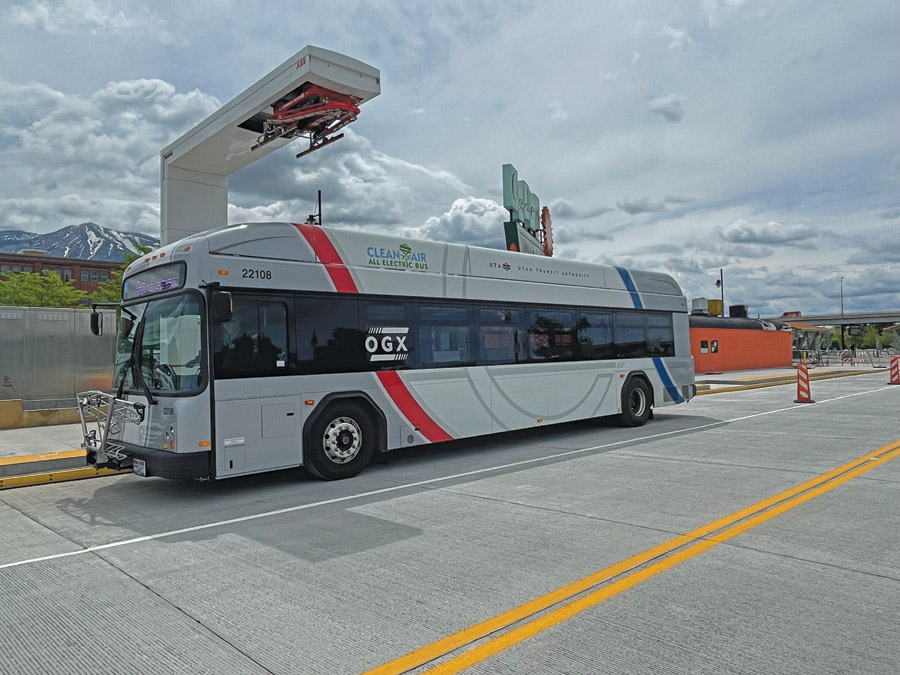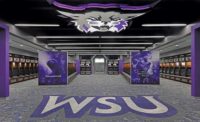WEBER STATE UNIVERSITY BRT
Ogden, Utah
BEST PROJECT
Submitted by: Stacy and Witbeck
OWNER Utah Transit Authority
LEAD DESIGN FIRM/CIVIL Jacobs
GENERAL CONTRACTOR Stacy and Witbeck
STRUCTURAL ENGINEER Pierline Engineering
ARCHITECT PIVOT Architecture
SUBCONTRACTORS COP Construction; Western Paving; Stapp Construction; Core & Main; Oldcastle Infrastructure
A 5.3-mile bus rapid transit (BRT) route travels from the Ogden Intermodal Transit Center, through Weber State University’s campus and ends at McKay-Dee Hospital. It features 13 level-boarding station platforms, signal prioritization technology, platform canopies, seating, off-board fare collection and other amenities.
Scope of work on this $68-million project also included roadway, transit and signal improvements, walls, pedestrian areas and landscaping. The BRT utilizes electric buses with two on-route chargers and 15 chargers at the bus maintenance facility.
Due to limited right-of-way for the dedicated busway, the team reviewed several options to provide a shared station for both northbound and southbound buses. These options included using buses with left-side boarding or having buses run counterflow to traffic to allow them to dock at the station on the right side. The team decided to employ a crossover, where buses cross over to the left side of the station just before arriving and then cross back to the right side of traffic upon leaving the station. This solution didn’t require special buses and was the safest and least confusing for surrounding traffic.

Photo courtesy Stacy and Witbeck Inc.
To minimize impacts to WSU’s central campus, most work was completed during the summer months. However, two substantial cement shortages occurred during construction. In 2022, the shortage only lasted a few weeks, but in 2023, the shortage reduced the available concrete by 80% and lasted nearly 10 weeks. During this time, crews were scheduled to place 150 cu yd per day of concrete for 5-6 days a week but only had enough materials to place 150-200 cu yd of concrete per week during the peak summer construction months. To maintain the schedule, the team directed any available concrete to the most critical placements.
Weather also proved a challenge as the winter of 2022 turned into the wettest winter on record in the region. The team was unable to work a full week without at least one weather day from the last week of November through the first week of May. Despite these setbacks, the transit line was delivered on time and within budget in October 2023.




